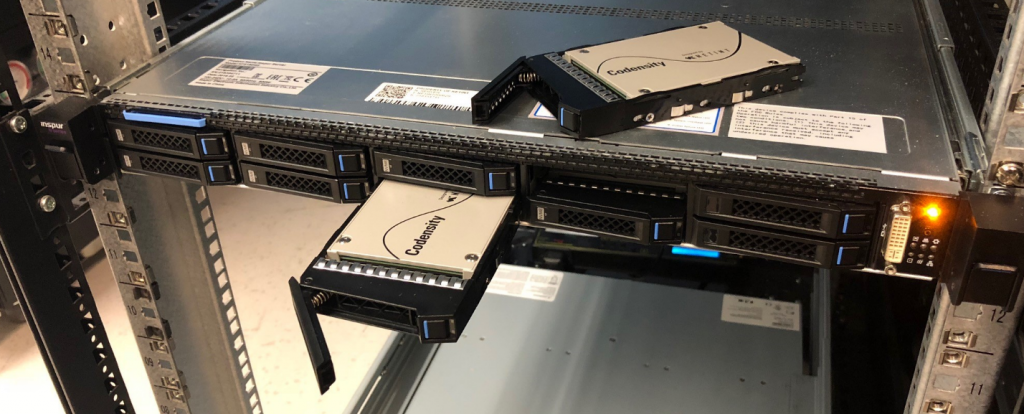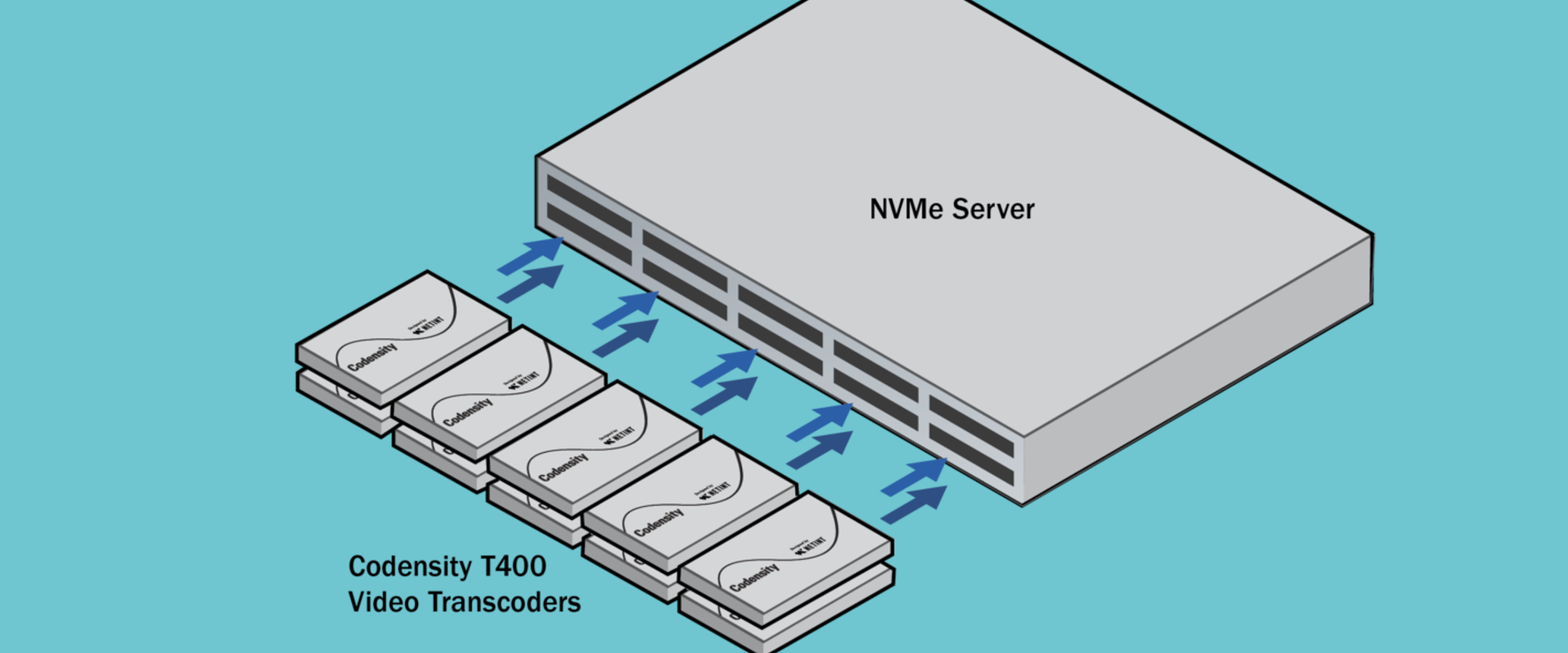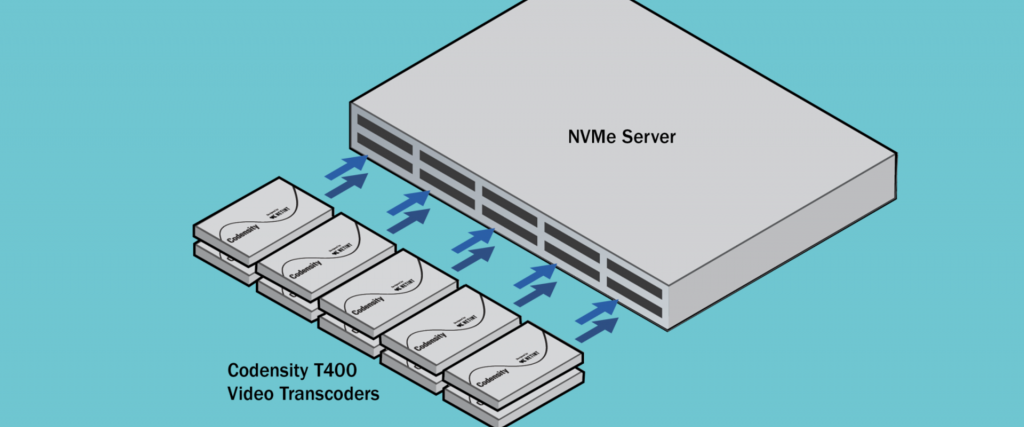Amongst encoding professionals, it is commonly understood that the best densities, performance, economics, and power efficiencies are achieved with Application Specific Integrated Circuits (ASICs). However, ASIC-based encoding solutions have traditionally been packaged in large rack-mount hardware encoding products that are expensive to purchase and scale.
That old school paradigm has changed with our compact Codensity T400 Video Transcoder modules, which offer an elegant, simple, yet effective deployment architecture for transcoding scalability by leveraging trends and innovations in the buildout of storage architectures in cloud datacenters, as shown in the top-of-page banner photo of this blog. Let me take a moment to explain.
The storage industry introduced the Non-Volatile Memory express (NVMe) protocol to deliver:
- Low latency
- High throughput
- Low CPU overhead
- QoS awareness
The NVMe command structure is also extendable, allowing control of non-storage applications – like video encoding – to benefit from the same characteristics that NVMe provides, especially high throughput and low latency.
PCI Express™ (PCIe™) is the leading physical connectivity standard between host computer motherboards and peripheral devices such as storage drives. It is the 2.5” U.2 PCIe plug-in module form factor that has gained the most popularity with SSD vendors and cloud data center architects, as it provides a high-density solution with benefits of easy plug-in provisioning of SSD storage capacity upgrades and maintenance.
NETINT has introduced the world’s first high-performance multi-channel UHD/HD real-time video transcoder designed for deployment as a standard PCIe NVMe device.

Codensity T400 Video Transcoder in 2.5” U.2 Packaging
The Codensity T400 Video Transcoder module uses the exact same 2.5” U.2 form factor and the same NVMe protocol prevalent in modern SSD design and cloud storage buildouts.
This deployment architecture offers the following benefits for live video streaming service providers:
- Highest-density with lowest cost is achieved using provisionable, compact U.2 plug-in modules, with each T400 module having as high as 1080p240 capacity, at as low as 1/10 of software encoding solution costs.
- Plug and Play Thanks for the well adopted standard NVMe driver, user has no need to install any special drivers. Furthermore, Codensity transcoder can be integrated with the FFmpeg SW suite, user can re-use all their current applications without changing any application flow. With the cutting-edge high bandwidth PCIe interface, Codensity transcoder can accept a great amount raw YUV videos streams and encode them to AVC/HEVC format in real time, it is a perfect match for those who have complicated video application flows.
- Scalability is achieved by potentially plugging dozens of T400 modules into NVMe servers, racks, and even NVMe-oF storage arrays that exist in modern data centers today, or sourced from a variety of IT infrastructure vendors.

T400 U.2 modules plugging into a 1RU NVMe Server
The photo above shows an off-the-shelf 1RU NVMe server with ten NVMe plug-in slots, hosting ten Codensity T400 U.2 modules. This hardware configuration can decode eighty (80) independent H.264 AVC 1080p30 video streams, and then encode up to eighty (80) streams of AVC/HEVC 1080p30 or user specific profiles or encoding ladders – in a 1 RU form factor!
That is how you do #EncodingAtScale!
To learn more, please download our whitepaper Encoding at Scale for Live Video Streaming, or contact NETINT today.


